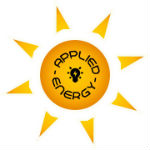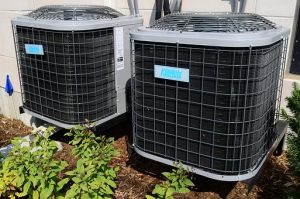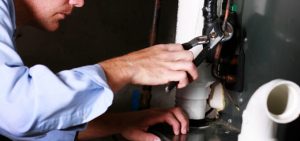Behind today’s high-efficiency furnaces and A/C are higher efficiency motors designed to reduce the total electrical consumption, thereby raising the overall consumption of the system. This equipment also maintains the proper cubic feet per minute, better known as CFM across the various parts of the system, including the condenser coil, the heat exchangers, and the evaporator coils. Airflow is critical for these devices to operate properly. As such, the use of ECM motor technology helps in both these fronts.
What is an Electronically Commuted Motor, better known ECM motors? ECM motors, also known as variable speed motors, are motors that can vary the RPM of their motors. However, variation in speeds only happens when conditions within the system change. In the case of A/Cs and furnaces, the changes occur in an effort to maintain a programmed CFM.
ECM motors have 3 parts components:
1. The motor
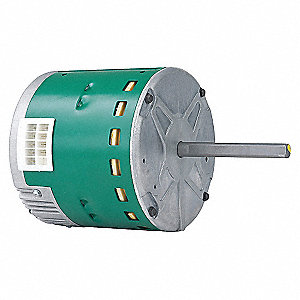
The motor does not have windings like typical motors. The motor uses DC voltage and magnetic fields drive the stator. The starting procedure involves the motor rocking back and forth while aligning the magnetic fields in order to drive the motor. These motors can operate with 220 volts as well as 110 volts, depending on the five pin power plug configuration.
This system rarely breaks down and features exceptional reliability. The only instance where failures will occur is when someone drops the module with the motor plugged in, therefore, breaking the wires that connect the motor.
2. ECM Microprocessor Module
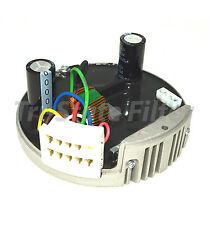
This is the brains of the motor. The board send programming information from using a 16 pin harness and thereafter translates it for the motor. This allows the motor to produce the right CFM. As such, it functions as the brain, controlling the relationship between torque, speed, and the airflow the system yields. The module is programmed at the factory for each specific unit. Modules are customized for a specific model and are, therefore, not interchangeable.
You can mount at one end of the motor or install it remotely.
3. Control Board
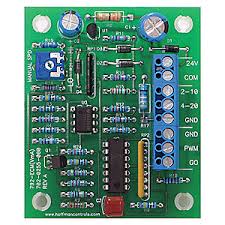
The control board is the component that stores the desired CFM for the application. As mentioned above, it connects to the module through the 16 pin harness.
OK, so how does it work …
The ECM motor is capable of maintaining a programmed CFM whilst responding to changing torque. When there is a change in torque, the motor increases or decreases the RPM, therefore, maintaining the predefined CFM. I admit it, it can get a tad confusing.
For a better understanding, let’s consider how an ECM motor works on an electric car that has cruise control on. The cruise control is the program that pre-defines how fast the car should move. It set the speed limit in mile per hour.
Obviously, as you set the cruise control, the motors will have a certain RPM. When you get to a hill, the cruise control will sense a change in torque and will rev up to maintain the predefined speed. The same case applies when you travel down a hill. The motor senses less torque and therefore, reduces the RPMs to maintain the predefined speed.
This is the same principles that the ECM motor uses. It functions by tracking the torque, RPM, and CFM (in the place of the mph). In the place of the steering column is the board, which controls the ‘direction’ in the sense that it controls the furnace or AC profiles – delay, heat, adjust, and cool. After programming the desired CFM, the motor and the module will automatically work out what to do.

Let’s think of a hypothetical AC – 3 ton AC. For the AC to function correctly, we need a total of 1200 CFM or 400 CFM per ton. You program the board appropriately and both the adjust and cool profiles to as close to 1200 CFM as you can. Note that you should always use tables provided by the manufactures when you want to set up the ECM motor.
When you want the cooling function, the motor will start and thereafter try to maintain the ideal CFM as much as possible despite the variety of operating conditions. As the AC runs, the evaporator will naturally get wet, which causes the static pressure to go up. And as the static pressure goes up, the motor will sense some changes in torque. This can be equated to a car going uphill. As such, the motor will start to increase the RPM in order to maintain the ideal CFM expected of the system.
This motor process is experienced when the filter gets dirty. The return static will increase and the motor revs will increase to maintain the ideal CFM.
Under normal circumstance (with a clean filter), when latent heat decreases and there is less water or humidity around the coil, static will reduce. This results in a torque reduction, causing the RPM to decrease, thereby maintaining the predefined CFM. You can expect the system to react in this same manner after changing the filter.
This same process occurs under the heating mode. With heating, you program the board to instruct the motor to maintain the desired increase in temperature for the system. The motor will, therefore, operate to deliver the appropriate CFM to maintain that specified increased in temperature. However, if the filter gets dirty, you can expect an increase in motor RPM to maintain the desired CFM for the predefined temperature rise.
Finally, you can set a “Delay” profile. This function is used for cooling. However, it allows users to further fine tune the motor response when called upon to start to end a cooling call. Generally, you can set Humid, Dry, Normal, or the factory default profile using the control panels.
By maintaining the appropriate temperature increase in heating function and the proper CFM while cooling, you are able to eke out maximum efficiency out of your AC or furnace. Moreover, the ECM motor uses less wattage than the traditional PSC motor, further increasing the energy efficiency of the system. You can now appreciate why the ECM motors are fast becoming the industry standard for comprehensive energy efficiency.
